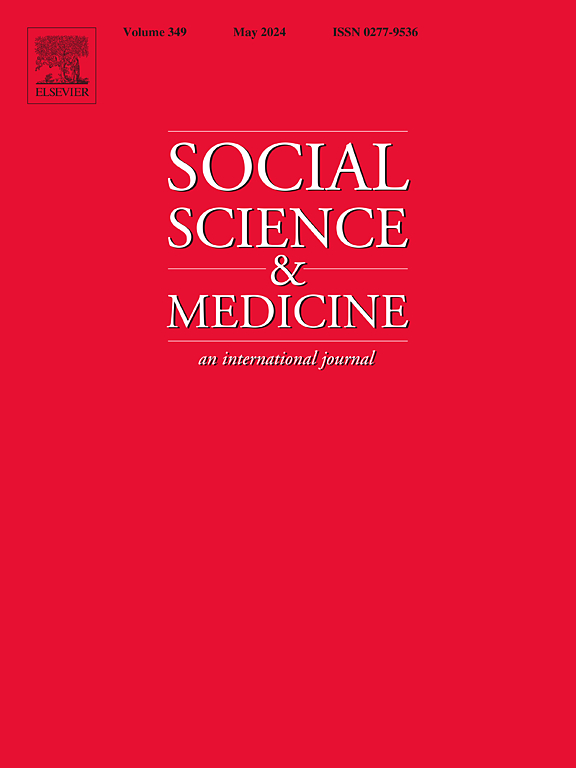Divergence in smoking and drinking trends: Results from age-period-cohort analytical approach
IF 4.9
2区 医学
Q1 PUBLIC, ENVIRONMENTAL & OCCUPATIONAL HEALTH
引用次数: 0
Abstract
Background
Smoking has dropped substantially over time while alcohol consumption has increased. Understanding how smoking and drinking relate to age, time-period or birth cohorts may improve public health measures.
Method
The cross-sectional Continuous Household Survey in Northern Ireland provided bi-annual, household-level data on smoking and drinking from 1985 to 2015. An age-period-cohort approach was employed using 10-year age groups and 9 birth cohorts. A descriptive analysis of smoking and drinking by birth cohort was performed and supplemented by a joinpoint analysis. An Intrinsic Estimator model was used to examine behaviour patterns defined separately by age, time-period, and cohort.
Results
Age effects showed that smoking and drinking peaked during adolescence and young adulthood (relative risk (RR) of age 25–34 vs. all ages: RR smoking = 1.59, RR drinking = 1.61, p < 0.001), followed by a progressive subsequent decline with age. Distinct secular trends were observed whereby smoking decreased over time but non-abstinence rates in relation to alcohol consumption increased substantially from 1985 to 2015. Cohort effects in smoking and drinking suggested that Generation X (born around 1961–1980) appeared to have a slightly higher likelihood of smoking and drinking but this converged with other cohorts over time.
Conclusion
The absence of similar policy efforts for alcohol as given to smoking may explain the divergence in secular trends of smoking and drinking. Targeting interventions towards adolescents and young adults may offer the best chance of reducing smoking and drinking prevalence. Cohort effects suggest the need for further research about the relationship between drinking and Northern Ireland's political history.
吸烟和饮酒趋势的差异:年龄-时期-队列分析方法的结果
背景随着时间的推移,吸烟率大幅下降,而饮酒量却在增加。了解吸烟和饮酒与年龄、时间段或出生队列之间的关系可改进公共卫生措施。方法北爱尔兰的横断面连续住户调查提供了从 1985 年到 2015 年每两年一次的家庭层面的吸烟和饮酒数据。采用年龄段-队列方法,使用 10 年年龄组和 9 个出生队列。按出生队列对吸烟和饮酒情况进行了描述性分析,并辅以连接点分析。结果年龄效应显示,吸烟和饮酒在青春期和青年期达到高峰(25-34 岁与所有年龄段相比的相对危险度 (RR):吸烟 RR = 1.59,饮酒 RR = 1.59):吸烟 RR = 1.59,饮酒 RR = 1.61,p < 0.001),随后随着年龄的增长而逐渐下降。从1985年到2015年,吸烟率随着时间的推移有所下降,但与饮酒相关的非戒酒率却大幅上升。吸烟和饮酒的队列效应表明,X一代(1961-1980年左右出生)吸烟和饮酒的可能性似乎略高,但随着时间的推移,这种情况与其他队列趋于一致。针对青少年的干预措施可能是降低吸烟和饮酒流行率的最佳途径。队列效应表明,有必要进一步研究饮酒与北爱尔兰政治历史之间的关系。
本文章由计算机程序翻译,如有差异,请以英文原文为准。
求助全文
约1分钟内获得全文
求助全文
来源期刊

Social Science & Medicine
PUBLIC, ENVIRONMENTAL & OCCUPATIONAL HEALTH-
CiteScore
9.10
自引率
5.60%
发文量
762
审稿时长
38 days
期刊介绍:
Social Science & Medicine provides an international and interdisciplinary forum for the dissemination of social science research on health. We publish original research articles (both empirical and theoretical), reviews, position papers and commentaries on health issues, to inform current research, policy and practice in all areas of common interest to social scientists, health practitioners, and policy makers. The journal publishes material relevant to any aspect of health from a wide range of social science disciplines (anthropology, economics, epidemiology, geography, policy, psychology, and sociology), and material relevant to the social sciences from any of the professions concerned with physical and mental health, health care, clinical practice, and health policy and organization. We encourage material which is of general interest to an international readership.
 求助内容:
求助内容: 应助结果提醒方式:
应助结果提醒方式:


